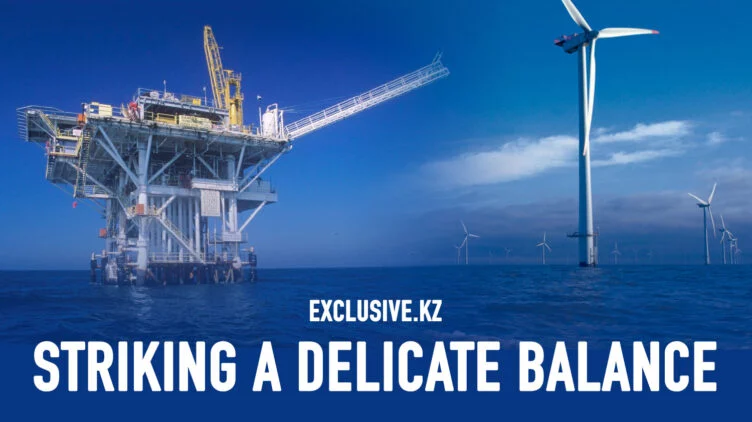Insurers Must Promote the Blue Economy

Covering more than 70% of the Earth’s surface, the ocean is indispensable for global health, climate regulation, and, crucially, economic stability. It absorbs about 30% of the world’s greenhouse-gas (GHG) emissions and hosts diverse ecosystems that sustain countless livelihoods. Pursuing a sustainable blue economy thus creates an opportunity to harmonize ocean conservation with economic growth in critical sectors like fisheries, tourism, and renewable energy.
Achieving this requires striking a delicate balance between using the ocean’s resources and respecting its natural limits, especially amid the escalating climate crisis. Degradation caused by human activities poses significant ecological and economic risks. Rising sea levels, increasingly intense storms, and coastal erosion threaten to damage infrastructure and devastate communities. Biodiversity loss and ocean warming and acidification disrupt marine ecosystems, hinder carbon sequestration and oxygen production, and diminish fisheries and the tourism industry. More than ever, a sustainable approach to ocean management is needed to safeguard economic interests and marine health.
In this context, insurance companies have both the responsibility and the tools to support clients involved in blue-economy activities, which are becoming less insurable as ocean health deteriorates. Extreme weather events – particularly increased flooding – result in higher claims and can even make it prohibitively expensive to cover certain assets. Exacerbating this trend is the destruction of marine ecosystems, which weaken natural coastal protection. To ensure that blue-economy businesses can secure affordable insurance and navigate the escalating risks associated with declining ocean health, insurers must adapt their risk-assessment models and make marine protection a priority.
For starters, these firms must recognize nature’s importance for disaster-risk management and climate adaptation, particularly in more vulnerable places. Coral reefs and mangroves, for example, reduce flooding and mitigate storm surge in coastal communities, in addition to their many other benefits, from sequestering carbon to supporting local industries. To protect these natural assets and the livelihoods that depend on them, insurers can offer parametric insurance policies that allow for the rapid deployment of pre-agreed funds after an extreme weather event, rather than indemnifying against actual loss.

Such a program protects the Mayan fishing community responsible for the restoration and conservation of Mexico’s San Crisanto mangrove forests. If a hurricane hits, compensation of up to $100,000 is automatically triggered, although the amount varies according to the wind strength and proximity to the protected area, and is intended to cover the cost of repairs. This will ensure the sustainability of the carbon credits that finance the community’s activities and allow it to pay for insurance in the first place.
Another innovative method is the use of debt-for-nature swaps, whereby countries can reduce their debt obligations in exchange for committing to marine conservation. A good example of this approach is The Bahamas debt-conversion project, for which a private investor and a multilateral development bank are acting as co-guarantors, and AXA XL – a subsidiary of AXA, where I work – is providing credit insurance. By de-risking these swaps, insurers can help alleviate economic pressure on governments, providing them with the fiscal space to safeguard marine ecosystems and foster local economies built on sustainable tourism and fisheries.
Of course, insurance companies should also address the other critical problems that threaten ocean health, such as plastic pollution and GHG emissions. That could mean engaging with their clients to promote sustainable practices and investing in efforts to reduce the climate impact of maritime transport, tourism, and other high-emitting sectors.
Insurers have other tools at their disposal to drive sustainable growth in the blue economy. They can offer tailored products, such as aquaculture insurance, to safeguard fish-farming operations from disease outbreaks, changing water conditions, and other environmental risks, and insurance for closed aquaculture farms that prevent harmful residues from polluting marine environments. Similarly, insuring innovative clean technologies like wind-assisted propulsion systems, which have demonstrated significant potential to reduce CO2 emissions and fuel consumption, can accelerate the shift to a greener maritime future.
Developing a thriving, sustainable blue economy requires meaningful, coordinated action backed by science-based recommendations. To that end, insurance firms should invest in research focused on coastal living, fisheries, aquaculture, blue carbon, and climate change, as well as efforts to develop new technologies for marine conservation, as we do with the AXA Research Fund.
Momentum is building behind the blue economy. At this week’s United Nations Ocean Conference in Nice, insurers and investors must harness this momentum and bring climate and economic imperatives into closer alignment. To secure a sustainable future for our oceans and the communities that depend on them, marine protection and economic growth must go hand in hand.
Copyright: Project Syndicate, 2025.





Все комментарии проходят предварительную модерацию редакцией и появляются не сразу.